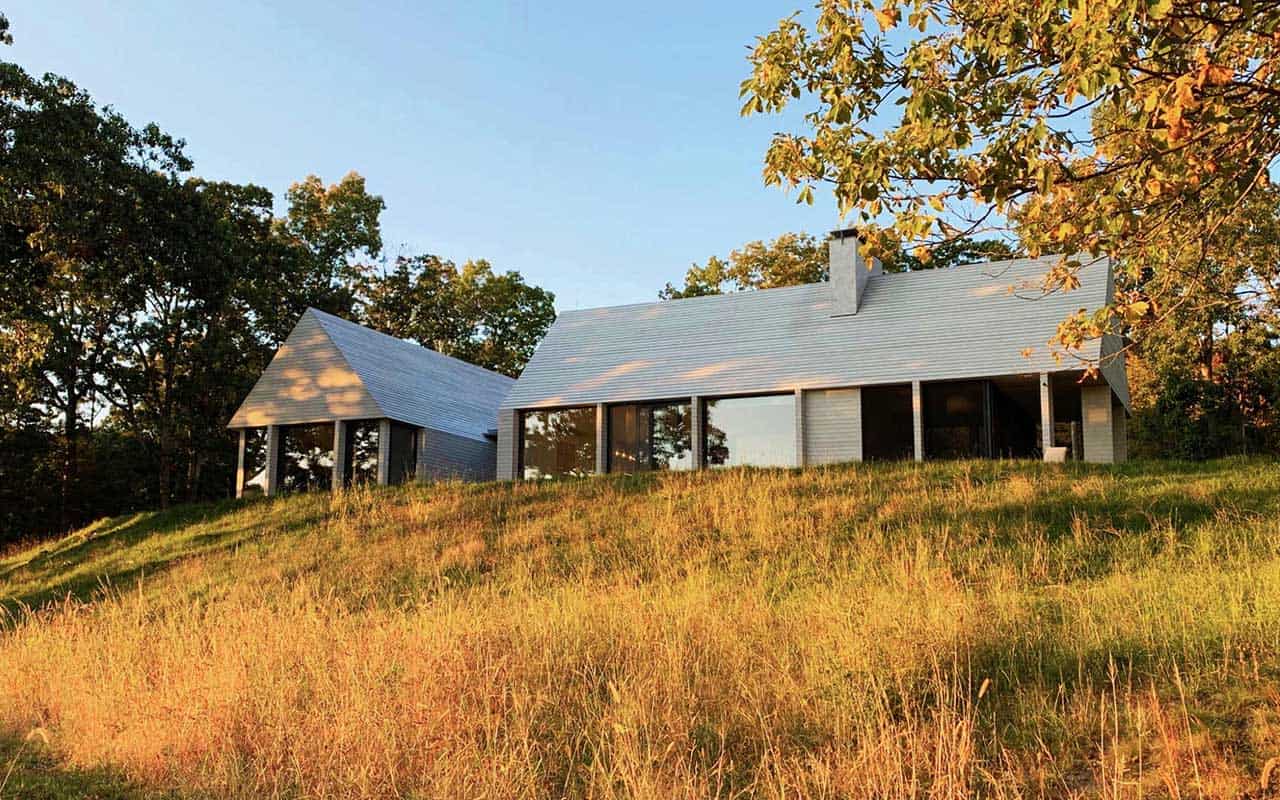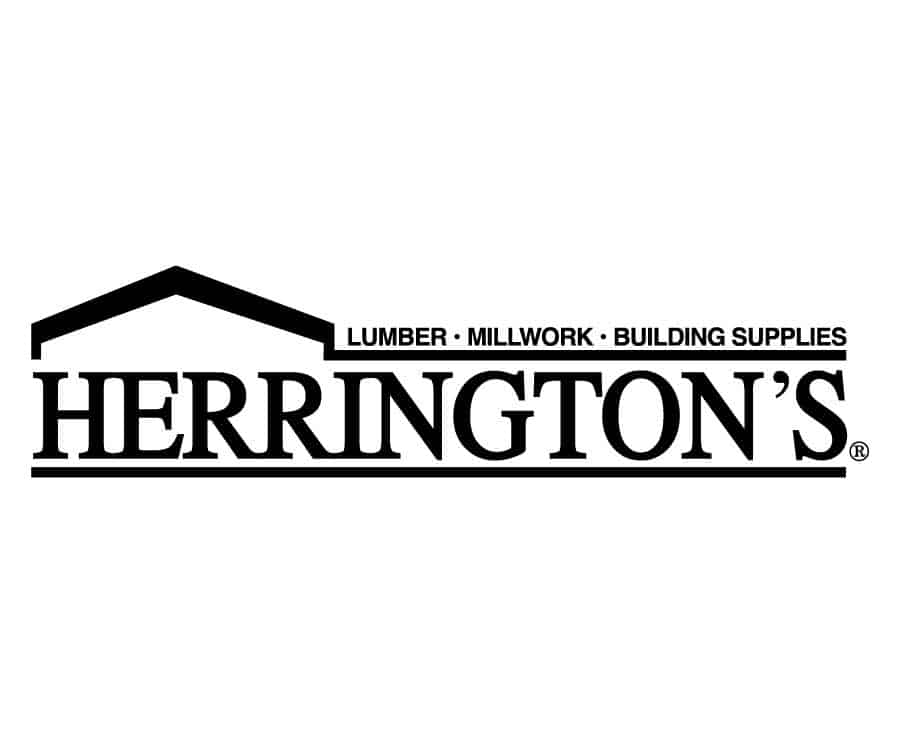Main Street Business

Building Houses for 46 Years
Once we decided to do a real estate feature on new house construction in this June issue, it was logical to interview Rick McCue who has been building custom homes in New York and Connecticut for 46 years. We had an early morning conversation at his office on Walton Street in Lakeville, CT, before he hit the road to do his daily visit to check on progress on all his current projects.
Do you really get up at 3:30 in the morning? What do you do?
It’s very quiet until about 6am and I can get a lot done before then – answering emails, doing proposals, going over contracts, and planning the days. From 6 to 8 I talk to my sub contractors solving problems that have come up with missing materials, delays, change orders, etc. I spend about six hours of everyday in my truck visiting job sites. Every year I drive about 50,000 miles. I try to visit every job every day.
How busy are you right now?
We’re always busy and typically booked 12 to 24 months out. Usually we are working on 3.5 houses a year, but right now it’s double that. I have everyone who has worked for me in the last 30 years busy on projects working hard.
Do you only do new house construction?
About 75% of our business is building new houses. We have five full-time carpenters that work for me who stay busy providing service to existing customers and doing renovations and punch lists. We do small jobs as well, like an $8,000 siding repair in Cornwall they are working on right now.
What’s the process for building a new house?
Usually I am brought into the process at the very beginning and work with the client and architect to develop the design and specifications.
Who does all the work?
Over the years I have developed an extensive network of specialized sub contractors. I provide work, pay them promptly – sometimes before they are done – and they produce exceptional results. The list includes excavating, foundations, framing, exterior finishing, roofing, electrical, HVAC, plumbing, tile work, millwork, interior and exterior painting, finish carpentry, flooring, cabinet makers, appliances, hardscaping and driveway, swimming pools, dry wall and plasterers.
Have you ever fired a client or had a dissatisfied customer?
First, I don’t take jobs that I won’t enjoy. It should be a good time for the 12 or 14 months it takes to build a house. I’ve built 110 houses in the last 40 years and don’t have a dissatisfied customer. I always tell the client what I think even though they may not want to hear it. One Sharon client wanted us to renovate an old barn and I recommended tearing it down and starting over. He was upset but listened. Later he said it was the best advice he’d ever had. I’ve only stopped working with a client on two occasions in 46 years. Life is too short to spend arguing.
What are the key talents for a contractor?
Contracting is all about organization – if one thing goes wrong everything collapses. Communication with client, architect, and subs is critical and being available 24/7. Visiting jobs every day is a way to control quality. It also helps to be a psychiatrist.
Why do you have such a stellar reputation?
Because I work so hard. And it’s always in your best interest to make sure the client is satisfied.
Has COVID affected your business?
The major impact is that people don’t have anything to spend their money on except for their houses. It’s not how much will it cost, but when. The price of materials is the biggest impact. Prices on metal roofing and plywood have doubled. In February I ordered materials in advance to avoid price increases.
How did you build your business?
I worked for another contractor for six years and then went out on my own at age 23 building small additions, putting on roofs, and doing repairs. When I first started out I was on the job as a carpenter/overseer all day every day. In my early 30s I went up on a roof of a house we were building in Kent to make sure it wasn’t too icy for my guys to work on, and I found out quickly it was. I fell off the roof and fractured three vertebrae. I was paralyzed from the waist down, not a good situation. All my subcontractors used to come to the hospital at 6:30 in the morning so we could meet. After a couple weeks, I started to get feeling back in my legs and was rehabilitated so I could walk again. Not quite that simple, but after I recovered I built two more houses hands-on myself just to prove that I could do it, and then I hung up my tools and became a general contractor full-time.
The fine home building really started when a client asked me to do a mega-mansion in Sharon. He was very pleased and very social and recommended me to everyone. Since then all my business has been by referral. I’m so fortunate to live in a place where people want to build beautiful homes. Our website showcases our work and has client comments. We never advertise and I don’t put up any signs on our worksites or even on our trucks.
How much does it cost to build a high quality, custom home?
It varies enormously, but a range for us would be $600 to $1,000 per square foot.
Is there any way to save money?
There are some items that can be factory-made. For example, high quality factory kitchen cabinets might be $40,000 while custom would be double that. Our clients always know exactly what they are paying for with each sub according to a schedule of values and the details of work performed.
You grew up in Lakeville. How has it changed?
There were always a few wealthy people in the Northwest corner, but in the 1980s it changed. Suddenly New Yorkers could afford country houses and demand for fine home building increased. Farms were going out of business so land was available. I was lucky to be in the right place at the right time.
What do you like most about this business?
I get a really big kick out of starting and then finishing a house. Right now I’m very pleased with the contemporary house we just finished on Belgo Road (see photo). Three homes we built have been published in Architectural Digest.
What kind of house did you build for yourself?
My previous house was a Georgian, but my current one is Adirondack style – a very different style from the houses that I build for my clients. The massive square cut logs are from an old growth forest in eastern Canada. The government gave permission to a religious group to cut and haul logs out of the forest in the winter time with horses so there was no environmental damage like commercial logging. The house is a dovetailed hand-hewn Swedish design log house. I think the longest log in the house is 54 feet. The logs are all approximately ten inches thick, and hewn on both sides and the bottom to top dimension varies depending on how big the tree was. The house was designed by my wife, an architect friend, and myself sitting at the kitchen table having a beer and coming up with an idea. We lived in the barn in the front which has an apartment above while the house was being constructed. It took about 14 months to finish and the inside is more like a castle than a rustic log house.
What do you enjoy in your spare time?
I love the outdoors and hunting. One of my clients actually took me hunting in Spain. I’ve travelled out west, to Canada, Europe, and New Zealand to hunt.



